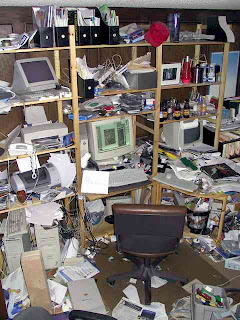.jpg)
As virtually everyone in the world knows at this point, Panasonic has announced the HPX 300. I'm not going to go over all the features of this camera, there are plenty of other sites that do a much better job of that than I can, but rather talk about how I am thinking about this camera. Panasonic helped make low budget/high image quality digital indie film a reality with the DVX-100 and the HVX-200. Think about the massive explosion of grass-roots creativity that has occured over the last five years and how many of those projects were shot on these two cameras. This legacy makes the camera worth some serious scrutiny. Street price is estimated at about $8500 including the lens.
I was fortunate enough to get a few minutes of Jan Crittenden-Livingston's (a ubiquitous, informative and patient presence on boards, at trade shows, etc.) time, watch her presentation and fiddle with camera a little bit at HD Expo. The main point that I took away from her was that Panasonic created this camera by listening to the requests of users. Fair enough, I think the update to the HVX and the release of HPX-170 did a decent job of incorporating many of the suggestions and complaints of users.
The main positive features that immediately hit me:
AVC-Intra codec- 10 bit image quantizing in an up-to-date intra-frame codec. For me, this really sets this camera above Sony's prosumer shoulder mount camera the HVR-S270U, which still records HDV to tape.
Here's Shane Ross's recent rant about working with HDV.
20 bit Image processing- maybe some of that power will be used for minimizing CMOS artifacts?
Shoulder mount form factor- no more "up the nose shots," or messed up wrists. Not only is it a true shoulder mount, it seems like a really intelligent take on it.
Ability to use professional power sources- can you say Anton Bauer?
Low power consumption-real life use will tell the story. This is at least partially a benefit of the CMOS sensors.
Ability to mount professional wireless receivers integrally with the camera (as an upgrade)
Chromatic aberration correction!-yes, CAC correction built into a sub $10K camera (when used with compatible lenses).
1920 x 1080 sensors- ok, this could be a positive or a negative given the sensor size, however, people seem to really think that sensor resolution is the most important spec in a camera, so Pansonic gave them what they've been asking for and they claim excellent low-light performance.
Interchangeable lenses- ok, I'm not going to run out and buy a horde of 1/3" lenses, but, it does mean that you will be able to use a relay lens with the camera with a DOF lens adapter and use higher quality glass with the camera and not have to go through a built-in zoom lens. It adds to the camera's flexibility.
Panasonic 5 year professional warrantySD/HD-SDI out- you can output either SD for live transmission or capture a 10 bit HD-SDI signal.
The less positive features:
1/3" CMOS sensors- no camera is going to be perfect for every use. Rolling shutter will still be an issue, as with all CMOS chip camcorders. I am betting, though, that a substantial bit of that 20 bit image processing will be used for minimizing artifacts. 1/3" sensors have made many people groan, depth of field, low-light performance, resolution, etc. Panasonic seems to have made a choice here that the benefit of the AVC-I codec, Pansonic image processing and professional features would outweigh the 1/2" sensors on the EX-1 and EX-3.
Viewfinder sizeHow good is it's resolution? The part of Jan's presentation comparing the resolution of this camera to the EX-1/3 went by kind of quickly. I'd like to see some independent tests. But, then again, the HVX has been softer than a lot of other cameras......
The Gorilla in the Room-RED and it's proposed line of cameras. When will they actually be released and what will their final specifications be? You will need to add modifications (and cost) to shoulder mount them.
The other:
Camera weight is 11 pounds with lens- it doesn't seem like too crazy of a weight for a shoulder mount camera with all these professional features. It seems to be about 1/2 pound lighter than the HPX-500. It isn't going to be a camera for everyone.
In summaryIn my opinion, Panasonic's strong selling point in the prosumer class of camcorders is its image processing. I shot
this with a 4 year old HVX, lens adapter and low-end Nikon lenses. I haven't seen it projected on the big screen but a trusted source tells me that it looked fantastic. The final look is pretty much the look that I created in-camera and on-set. The ability to create the look you want in-camera, and not spend a lot of time and money in post (also due to the sturdy and easy to work with Panasonic intra-frame codecs) is what sets Panasonic apart. The camera is not for every use, however, it certainly could be a versatile tool for someone who wants to shoot documentaries, (flash photography free) events, shorts, webisodes and low-budget features. I can't wait to get my hands on one to see whether it lives up to Pansonic's tradition of beautiful image-processing.


















.jpg)



.jpg)












